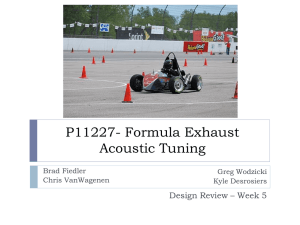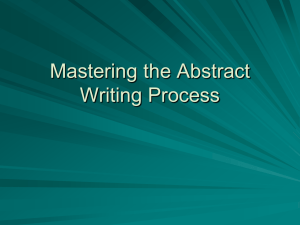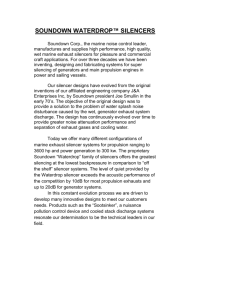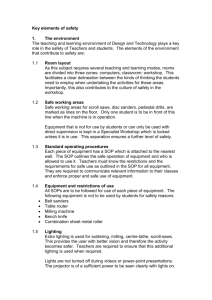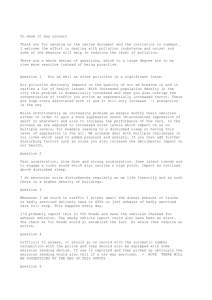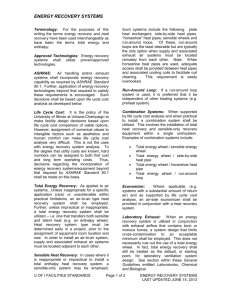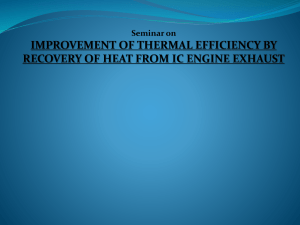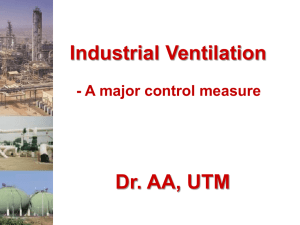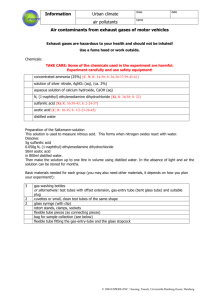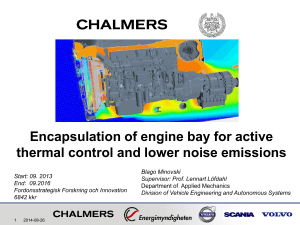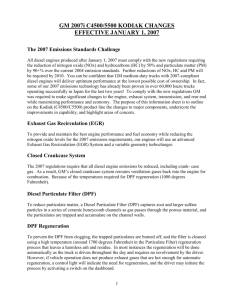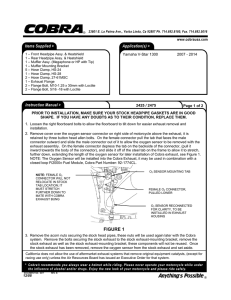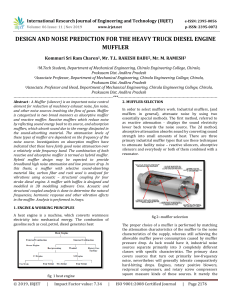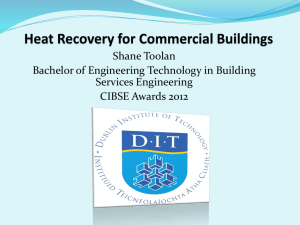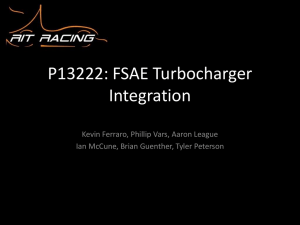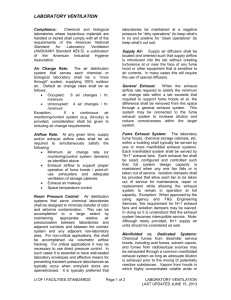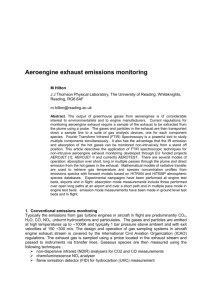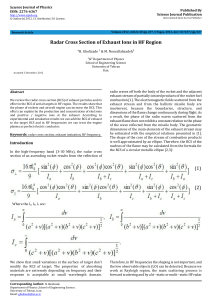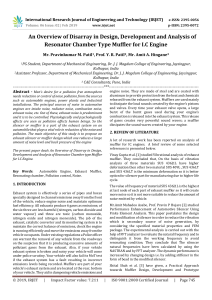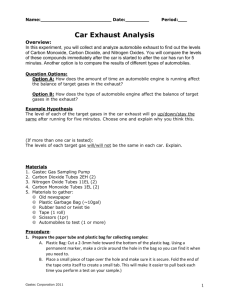Week 5 Review Rev2
advertisement
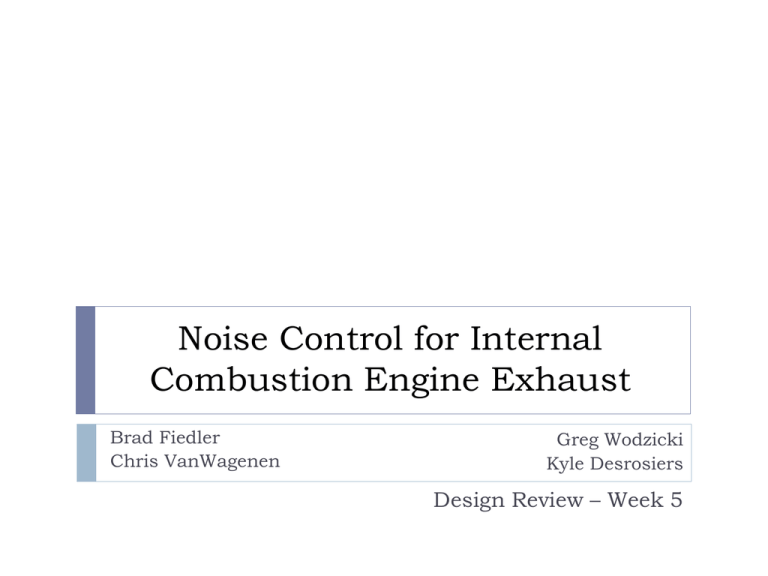
Noise Control for Internal Combustion Engine Exhaust Brad Fiedler Chris VanWagenen Greg Wodzicki Kyle Desrosiers Design Review – Week 5 Agenda Introduction / Background Understanding the Problem and Current Technology Courses of Action Course of Action Comparison Best Courses of Action Closing Questions Introduction/Background Background Customer Needs Design Objectives Risk Assessment Gantt Chart FSAE Formula One Vehicle What year Vehicle is this? Problem Background FSAE rules dictate engine noise under 110dB. Current Passive Noise Control device (Glass pack) holds engine sound from wide range above and below 110dB Current technology is not tuned for optimal noise reduction or engine performance Introduction / Background Design Objectives Utilize Active / Passive Noise Cancellation Technology to: Maintain engine output under FSAE limit of 110dB. Adhere to all FSAE Rules To not add significant weight to vehicle Maintain/Improve engine performance Lower Vehicle Center of Gravity Introduction / Background Performance Objective Possible Performance Effects of Different Exhaust Technology: A – No Exhaust Tuning B – Traditional Exhaust Length Tuning C – Possible Active Noise Cancellation Improvement* * Dependent on cancellation method Introduction / Background Risk Assesment xxxxxxxxxx: xxxxxx Introduction / Background Project Plan xxxxxxxxxx: xxxxxx Introduction / Background Understanding the Problem and Current Technology Internal Combustion Engine ICE Exhaust Acoustics Tuning a Exhaust Understanding ANC Lawnmower Engine Glass Pack Muffler Turbo Muffler Baffle Muffler Understanding the 4 Stroke ICE Understanding the Problem and Current Technology Understanding Optimal Acoustics Understanding the Problem and Current Technology Calculating Tuned Exhaust Length 𝑘 ∗ 𝐸𝑜 ∗ 𝑉𝑠 𝐿= 𝑁 Understanding the Problem and Current Technology 𝑁 = Crankshaft Speed in RPM 𝑘 = Constant Understanding Active Noise Cancellation - 1 Superposition Harmonics Understanding the Problem and Current Technology Understanding Active Noise Cancellation - 2 𝐵𝑒 𝑖𝑤𝑡−𝑖𝑘(𝐿𝑡 −𝐿1 ) 𝐿1 𝐿𝑡 𝐴𝑒 𝑖𝑤𝑡−𝑖𝑘𝑥 Signal Equations: 𝐴𝑒 𝑖𝑤𝑡−𝑖𝑘𝑥 + 𝐵𝑒 𝑖𝑤𝑡−𝑖𝑘(𝐿𝑡−𝐿1) 𝐴𝑒 𝑖𝑤𝑡−𝑖𝑘𝑥 + 𝐵𝑒 𝑖𝑤𝑡−𝑖𝑘(𝐿𝑡 −𝐿1) = 0 Noise Reduction: =0 𝑁𝑜𝑖𝑠𝑒 𝑅𝑒𝑑𝑢𝑐𝑡𝑖𝑜𝑛 = 𝐴+ 𝐵𝑒 𝑖𝑘(𝐿1) = 0 @ 𝑥 = 𝐿𝑡 Understanding the Problem and Current Technology 𝑃 𝑤𝑖𝑡ℎ 𝐶𝑎𝑛𝑐𝑒𝑙𝑙𝑖𝑛𝑔 𝑃 𝑤𝑖𝑡ℎ𝑜𝑢𝑡 𝑐𝑎𝑛𝑐𝑒𝑙𝑙𝑎𝑡𝑖𝑜𝑛 Glass Pack Exhaust Travels through Pipe with Perforated Holes Sound Insulation Absorbs Sound Minimal Back Pressure Least Effective in Reducing Sound Understanding the Problem and Current Technology Turbo Muffler No Baffles Exhaust Forced to turn back and forth Increases Exhaust Length Increased Back Pressure with each turn Sound Insulation Absorbs Sound Moderately Effective in Reducing Sound Understanding the Problem and Current Technology Baffle Muffler Reflects Exhaust Throughout Chamber Reflections Cancel each other Most Back Pressure created Greatest Sound Reduction Understanding the Problem and Current Technology Lawnmower Engine xxxxxxxxxx: xxxxxx Introduction / Background Courses of Action Noise Reduction Techniques Explored Signal Processing for ANC Internal ANC with Microphone and Feedback Courses of Action Exhaust in Speaker Chamber Multiple Speaker with Error Microphone Courses of Action Signal Generation: Digital Signal Processing Courses of Action Filtering Technique 1: Filtered-X Least Mean Squared Filter Courses of Action
